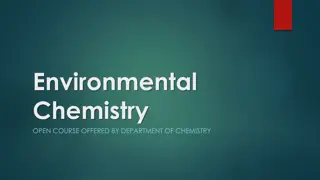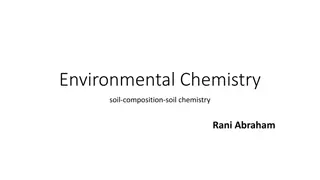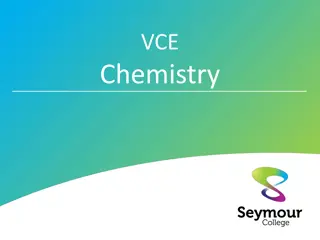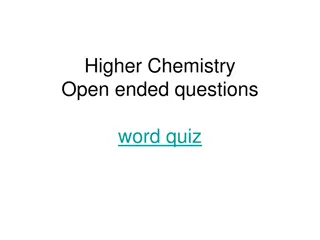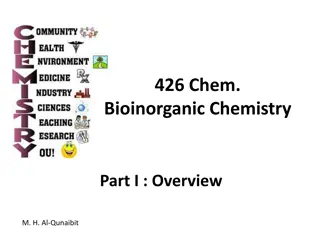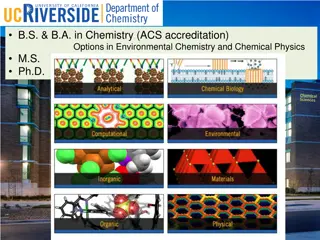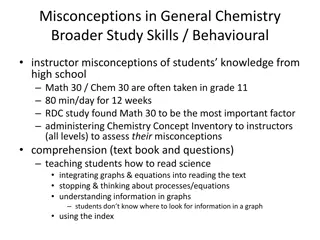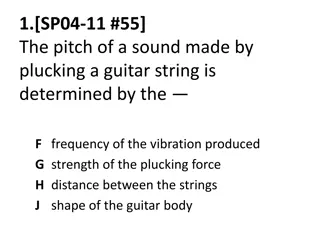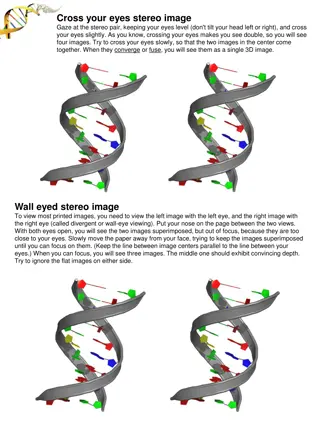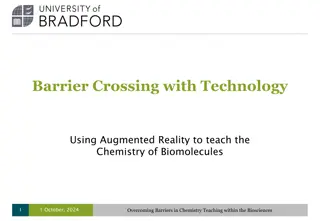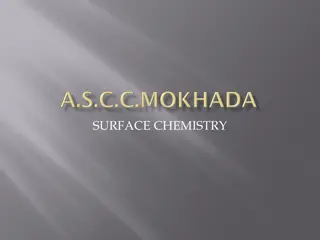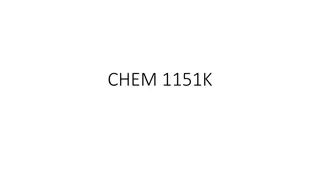Chemistry Concepts Explained Through Interactive Images
Explore key chemistry concepts such as equilibrium shifts, sublimation, boiling points, and energy changes illustrated with interactive images and clear explanations. Test your knowledge and understanding as you dive into the world of chemistry.
Download Presentation

Please find below an Image/Link to download the presentation.
The content on the website is provided AS IS for your information and personal use only. It may not be sold, licensed, or shared on other websites without obtaining consent from the author.If you encounter any issues during the download, it is possible that the publisher has removed the file from their server.
You are allowed to download the files provided on this website for personal or commercial use, subject to the condition that they are used lawfully. All files are the property of their respective owners.
The content on the website is provided AS IS for your information and personal use only. It may not be sold, licensed, or shared on other websites without obtaining consent from the author.
E N D
Presentation Transcript
1 9 10 11 12 13 14 15 16 17 18 19 20 21 22 23 24 25 26 27 28 29 30 31 32 33 34 35 36 37 38 39 40 2 3 4 5 6 7 8
2 SO2 (g) + O2 (g) ) 2 SO3 (g) + heat Adding what compound would shift the equilibrium to the left? a. SO2 b. O2 c. SO3 d. none of the above
2 SO2 (g) + O2 (g) ) 2 SO3 (g) + heat Adding what compound would shift the equilibrium to the left? Answer: c. SO3 Adding a compound on the right will make the equilbrium shift in the opposite direction. RETUR N
Which of the following best describes sublimation? F A solid melting to a liquid G A solid melting to a liquid, which then evaporates H The movement of gaseous particles so that they fill the space they occupy J A solid forming a gas
Which of the following best describes sublimation? Answer: J A solid forming a gas Sublimation is the direct conversion of solid to gas. RETURN
Standard atmospheric pressure is 101.3 kPa. According to the graph, which of these four liquids boils at the lowest temperature? A 1 B 2 C 3 D 4
Standard atmospheric pressure is 101.3 kPa. According to the graph, which of these four liquids boils at the lowest temperature? Answer: A 1 The boiling point is the temperature where vapor pressure = atmospheric pressure. At any pressure, line 1 is at the lowest temperature RETURN
Between points 2 and 3, energy is being used to A melt ice B heat water C evaporate water D heat water vapor
Between points 2 and 3, energy is being used to Answer: A melt ice When energy is being added with no change in temperature, a phase change is occuring. This is at 0oC, so this is melting ice. RETURN
The amount of energy needed to raise one gram of a substance one degree Kelvin is a characteristic property known as A heat of formation B heat of vaporization C molar heat of fusion D specific heat capacity
The amount of energy needed to raise one gram of a substance one degree Kelvin is a characteristic property known as Answer: D specific heat capacity RETURN
The energy required to melt a solid into a liquid is called A heat of vaporization B heat of fusion C cooling curve D triple point
The energy required to melt a solid into a liquid is called Answer: B heat of fusion The energy required to melt a solid into a liquid is heat of fusion The energy required to boil a liquid to gas is heat of vaporization RETURN
Free Point RETURN
Solid magnesium has a specific heat of 1.01 J/g C. How much heat is given off by a 20.0 gram sample of magnesium when it cools from 70.0 C to 50.0 C? F 202 J G 404 J H 808 J J 1010 J
Solid magnesium has a specific heat of 1.01 J/gC. How much heat is given off by a 20.0 gram sample of magnesium when it cools from 70.0 C to 50.0 C? Answer: G 404 J The formula for specific heat capacity is : Energy / (mass x temperature change) 1.01 = Energy / (20.0 g x 20 degrees) Energy = 404 J RETURN
At 100oC, what phase change occurs when the pressure drops from 105 kPa to 5 kPa? A solid to liquid B liquid to vapor C solid to vapor D vapor to liquid
At 100oC, what phase change occurs when the pressure drops from 105 kPa to 5 kPa? Answer: B liquid to vapor When plotting the first point (105 kPa, 100oC), it is in the liquid area. The second point (5 kPa, 100oC) is in the vapor area. RETURN
2HCl(g) Which condition will cause a shift in the equilibrium of the above reaction? A Double the concentration of reactants and products B Increase the reaction temperature C Reduce the concentration of products and reactants by 10% D Keep the reaction temperature constant H2(g) + Cl2(g)
2HCl(g) Which condition will cause a shift in the equilibrium of the above reaction? Answer: B Increase the reaction temperature H2(g) + Cl2(g) The choices with changes in concentration had equal changes in concentration. To shift the equilibrium, one compound would have to be added in a different amount. Keeping the temperature the same wouldn t change anything. RETURN
What is true about the chemical reaction shown below? C (s) + H2O (l) + 113 k J CO (g) + H2 (g) A It is a spontaneous reaction B It is an exothermic reaction C It is a synthesis reaction D It is an endothermic reaction
What is true about the chemical reaction shown below? C (s) + H2O (l) + 113 k J CO (g) + H2 (g) Answer: D It is an endothermic reaction Energy (113 kJ) is a reactant. When energy is added to the reaction, the reaction is endothermic. RETURN
The diagram above is a potential energy curve for a reaction. Which number represents the effect of a catalyst on the reaction? A 1 B 2 C 3 D 4
The diagram above is a potential energy curve for a reaction. Which number represents the effect of a catalyst on the reaction? Answer: B 2 A catalyst lowers the activation energy , which is the hump in the middle of the reaction coordinate RETURN
The diagram above is a potential energy curve for a reaction. Which number represents the enthalpy of the reaction? A 1 B 2 C 3 D 4
The diagram above is a potential energy curve for a reaction. Which number represents the enthalpy of the reaction? Answer A 1 The net energy of the reaction is 1 RETURN
The reaction is exothermic, so the energy at the end is lower than at the beginning. RETURN
Which of the following occurs when a reaction in a solution is at equilibriumand more product is added to thesolution? F Equilibrium shifts to produce more product G Equilibrium shifts to produce more reactant H No change will occur J The reaction will stop
Which of the following occurs when a reaction in a solution is at equilibriumand more product is added to thesolution? Answer: G Equilibrium shifts to produce more reactant Whenever you add something to one side, the equilibrium shifts the other direction. RETURN
H2O(l) Water molecules in a sealed jar are in astate of dynamic equilibrium becausewater vapor molecules A are condensing at the same rate that others are evaporating B cease to form when the air in the jar becomes saturated C are evaporating faster than they are condensing D form only at high temperatures H2O(g)
H2O(l) Water molecules in a sealed jar are in astate of dynamic equilibrium becausewater vapor molecules Answer: A are condensing at the same rate that others are evaporating H2O(g) The amount of water in the jar is not changing. As a result, if water is evaporating, it must be condensing at the same rate. RETURN
Answer: G Iron Crystals Iron has the highest melting point. To melt a solid, the intermolecular forces must be broken. As a result, iron has the strongest intermolecular forces. RETURN
Answer: B an exothermic reaction Heat is a product, so the overall energy decreased during the reaction. This would be exothermic RETURN
If the heat of fusion of water is 80 cal/g, the amount of heat energy required to change 15.0 grams of ice at 0 C to 15.0 grams of water at 0 C is A 80 cal B 560 cal C 1200 cal D 2400 cal
If the heat of fusion of water is 80 cal/g, the amount of heat energy required to change 15.0 grams of ice at 0 C to 15.0 grams of water at 0 C is Answer: C 1200 cal 80 cal/g x 15 g = 1200 cal RETURN
Which numbered process represents condensation? F 1 G 2 H 3 J 4
Which numbered process represents condensation? Answer: G 2 Condensation is gas to liquid 1-evaporation 3-melting 4-freezing RETURN RETURN RETURN
Water molecules have the greatest kinetic energy in A ice at 0 C B water at 373 K C water at 98 C D steam at 150 C
Water molecules have the greatest kinetic energy in A ice at 0 C = 273 K B water at 373 K C water at 98 C =371 K Answer: D steam at 150 C = 423 K Temperature is a measure of average kinetic energy. The highest temperature has the highest kinetic energy RETURN
The total disorder of a system is: A temperature B entropy C enthalpy D vapor pressure
The total disorder of a system is: Answer B entropy RETURN
What phase of matter has the highest entropy? A gas B liquid C solid D cannot be determined
What phase of matter has the highest entropy? Answer A gas Gas has no fixed volume or shape, so the molecules have the greatest amount of freedom. RETURN
As heat is added to a substance undergoing a phase change, the temperature remains constant because the energy is being used to- a. break covalent bonds b. lower the specific heat capacity c. overcome intermolecular forces d. oppose electron cloud repulsions
As heat is added to a substance undergoing a phase change, the temperature remains constant because the energy is being used to- Answer c. overcome intermolecular forces Intermolecular forces must be broken to change phases and this takes energy. The kinetic energy doesn t increase until the phase change is complete RETURN





